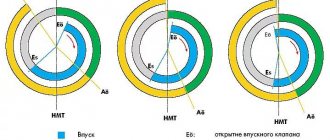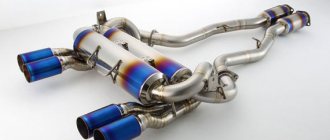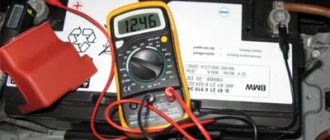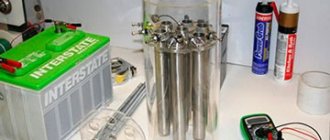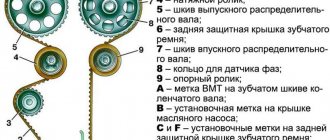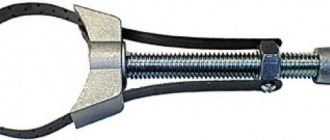Insulate your car!
Noise-vibration-thermal insulation will require very little money and free time, and you yourself, with your own hands, will be able to insulate your vehicle. We will be happy to help you with this necessary event.
What and how to insulate the engine
To insulate the engine, as a rule, special sheets of foam rubber or polyethylene covered with a layer of foil are used. The main thing is that such materials also have sound insulation and are also fireproof. It is best, according to experts, to insulate the engine with penofol.
To insulate or not to insulate?
The question that arises in the minds of novice drivers who are preparing to use their car in winter for the first time is whether it is necessary to insulate the engine. Considering the above facts, there can be only one answer - in regions of Russia with harsh winters, when the air temperature outside the window often drops below -25-30 degrees, insulating the engine compartment of a car is one of the most important stages in preparing the car for the cold season .
The average air temperature at which standard insulation (if provided by the design of the vehicle) of the engine compartment is sufficient is usually about -10 degrees. Otherwise, when the temperature is much lower, and, even more so, when the car is “sleeping overnight” not in a warm garage, but in a regular open parking lot, the need for additional insulation of the engine becomes even more obvious.
Do-it-yourself procedure for thermal insulation of an engine
- Remove the pattern from the inside of the hood. It is convenient to do this using tracing paper.
- We transfer the pattern to the material. Carefully cut out the parts with a stationery knife.
- Using moisture-resistant glue, we attach the thermal insulation to the inside of the hood, while the foil should remain outside.
You need to attach the insulation especially carefully so that it does not come off when driving, otherwise this will lead to unpleasant consequences for the engine and for you. Again, you need to manage to do this so that in the spring you can remove the insulation without damaging the hood.
Important. Automotive thermal insulation should not come into contact with the exhaust manifold and exhaust parts.
That's the whole trick! The costs for materials are minimal, but what is the result? The car warms up faster because heat does not escape through the hood. The engine remains warm for a long time, which means starting the car will be faster and easier. At the same time, car oil will not become viscous from the cold, and ice will no longer form on the hood, which can lead to metal corrosion.
The issue of car fuel economy is also being resolved. This also achieves the effect of engine noise insulation.
Recently, special car blankets for engine insulation have gone on sale. A very convenient thing. You just cover the engine in frosty weather, and when it gets warmer, remove it. It is only important to select this kind of thermal insulation according to the size of the engine compartment of your car. The main characteristics of a blanket for engine thermal insulation: fire resistance up to 800°C; fuel savings up to 30%.
In addition, insulate the car’s radiator grill with a so-called “muzzle.” It is very easy to sew using materials such as vinyl leatherette, batting or foam rubber. It is very easy to use. When they put it on coldly, it became warm, and they took it off.
to “How to insulate a car for the winter - advice from experienced people - We insulate the hood, radiator, engine”
- Yuri:
Now, of all construction insulation materials, the best price-quality option is basalt wool. Does not burn, does not fill with moisture, is relatively inexpensive, and has a huge selection of sizes.An important addition for cars not equipped with engine protection: close the grille at the bottom of the bumper by two thirds. When driving fast, the sump is blown with icy air and the temperature of the oil drops sharply. The difference between engine temperature and oil temperature is up to 30 degrees. And this is not very good for internal combustion engines.
On diesel cars, when operating in temperatures below -15, it is highly advisable to use a fine filter with heated return. Sometimes the diesel fuel was paraffinized on the filter element so that you had to stand for half an hour and warm up at idle.
And if money allows, then the best option is to install a coolant heater. Both fully autonomous diesel (Webasto) and electric (the car must be near an outlet) are suitable.
Answer
- Basil:
And here, the old “old-fashioned method” of insulating the engine compartment with felt felt still has its followers and is very popular among car enthusiasts. Car blankets began to appear about five years ago and, to be honest, they did not immediately stake out this segment of the market; even the well-known rollers with engine ignition did not impress everyone. But as they say, so many people have so many opinions, and everyone decides for himself whether to buy a high-quality car blanket for his iron friend, or simply cut out a piece of felt that is close in size and cover the engine with it.
Answer
- Ivan:
At low temperatures, you can simply attach a thermal apron to the bottom of the hood so that the heat stays inside the engine compartment for as long as possible and close the pan. This method is the least expensive and simple, but it also helps to protect the car and save time in the morning. Closing the ventilation holes in the bumper is the first thing to do for insulation. Also, as a pleasant bonus, some may not have noticed, but fuel consumption decreases at a stable temperature, and the interior warms up noticeably better. Materials should be selected so that they have maximum fire resistance and do not accumulate static from electrical wiring. It’s also worth insulating the radiator properly. And you don't need to clutter up the exhaust manifold too much.
Answer
How and how to insulate a car interior
It is very important to choose a material for thermal insulation that meets all the necessary requirements. It should be:
- non-toxic;
- with a heating temperature above 160°C;
- non-flammable;
- not labor-intensive to work with your own hands;
- steam and sound insulating;
- not thermally conductive;
- light, flexible, thin and at the same time durable;
- with reflective effect;
- certified by the sanitary and epidemiological station.
Such thermal insulation material exists. It's called penofol. This is polyethylene foamed with gas, covered with a layer of foil. This is what experts recommend to use for noise, vibration and heat insulation of the car interior.
In addition, you will need the following materials: rubber door seals, sealant, glue, stapler and staples for it.
Let's start working on insulating the interior with our own hands:
- We disconnect the panels from the car doors and take out the seats, this will make it more convenient to work. Remove the sheathing from the roof.
- We replace rubber seals on all existing doors.
- We remove patterns from those areas of the car that you are going to insulate (floor, roof, doors).
- We seal the cracks on the floor with sealant, then the thermal insulation will be more effective.
- Using a stationery knife, we cut out the parts from penofol according to the patterns.
- We lay and attach the floor parts with special glue, or using a stapler. Let them dry well. Make sure that the edges of the material do not extend beyond certain places. Everything should be clear and neat. Observe all dimensions exactly, this will further protect the movement of your car.
- Do-it-yourself thermal insulation of doors is done in the same way. We cover the inside parts of the doors with penofol and let them dry. We carefully cut out the spaces for speakers on the doors. We install the trim in place using special car clips. Don't forget to check the operation of the handles and window lifts.
- Let's move on to the thermal insulation of the roof and frames of the car. Carefully apply special glue to them and glue the foam foam pattern for the roofs. Leave to dry. then we attach the upholstery; if it is no longer suitable for further use, it is easier to cut out a new one with your own hands.
Insulating the trunk of a car
Car trunk insulation
To insulate the trunk, they use both penofol and other insulation materials (splen, isolon, vibroplast):
- We remove everything from the trunk. We clean it thoroughly. Remove the clips that held the upholstery.
- We remove the patterns from the bottom and wings of the trunk. We cut out parts from the selected material using our own hands.
- Using glue or a stapler, secure them inside the trunk of the car.
- We lay the trim on top (you can make it from vinyl artificial leather, it will be more practical) and fasten everything with car clips. You can make a rigid base, for example, from thick cardboard.
- At the rear door of the car, remove the upholstery and attach thermal insulation parts to the inside of the door. Using clips, install the upholstery in place.
How to insulate a car interior with your own hands?
During the operation of the car, the rubber seals on the doors wear out. This leads to drafts. Therefore, insulating a car must begin with replacing the seals, which can be purchased directly on this resource.
Before this, just look at the “Stores” section and select the appropriate product. When installing seals, it is necessary to maintain uniformity of the gap. This will eliminate drafts and ensure a comfortable temperature inside the car.
The best way to provide warmth to the interior is to install heat and sound insulation. It must be emphasized that this procedure is quite complex and expensive. First of all, you need to choose a high-quality insulating material that will not absorb water during high humidity. Insulation will also provide protection from moisture when washing the vehicle. A significant disadvantage of almost all innovative materials is that they absorb water.
Over time, this will lead to an unpleasant odor in the cabin. Therefore, it is recommended not to save on purchases, but to purchase high-quality insulating materials. A video instruction will help you learn all the nuances of insulating a car interior with your own hands. Directly below the text material you can watch video tips and recommendations from experts.
Summing up
Insulating your car for the winter is not an easy task. Its solution is always hampered by both doubts about the feasibility of insulating the engine and budget limitations in most cases. I can only say this for sure: if you live in harsh climatic conditions and actively use your car, then you definitely need to insulate it. In terms of comfort, an insulated car cannot be compared with a “naked” phaeton. By insulating you will not only protect your health, but also your vehicle. I tried to answer the question of how to insulate a car with my own hands in this article. Please do not judge strictly if I forgot to mention something. Thank you for your attention!
See also:
- How to wash a car in winter in questions and answers
- Is it necessary to warm up the car engine in winter?
- Should I warm up my diesel engine in winter or not?
- How long does it take to warm up an automatic car in winter?
- Is it necessary to insulate the battery in a car in winter?
- Why turn on the air conditioning in your car in winter?
- Do-it-yourself insulation of a car radiator
- How much gasoline does it take to warm up a car in winter?
How to insulate the power unit and hood of a car?
If the car owner lives in a region with a warm climate, then you can do without installing thermal protection. If the temperature drops below 20-25 degrees, then it is advisable to insulate the hood. The relevance of these actions is due to three reasons:
- Ice formation on the hood can damage paintwork;
- the need for prolonged warm-up of the power unit leads to significant excess fuel consumption;
- engine components wear out quickly.
Experienced motorists are well aware that starting a cold engine leads to a decrease in service life. This is due to the fact that in cold weather, engine oil and fuel lose their performance characteristics. If the oil has a high viscosity, then it does not immediately penetrate into all elements of the power unit. As a result, the engine must operate for some time in extreme conditions, without lubricants. If this situation occurs frequently, this significantly affects the service life and leads to wear of certain elements.
Another argument in favor of insulating a car is that at sub-zero temperatures the quality of the air-fuel mixture deteriorates. This is due to poor evaporation of gasoline at low temperatures.
At the same time, the battery loses its capacity. Taken together, all of the above problems lead to difficulties starting the engine. To avoid them, you can use the following methods:
- insulate the battery. If we are talking about severe frosts, below 30 degrees, then this measure is necessary. Electrolyte and distilled water can freeze in the cold, and when you try to start the engine, the frozen liquid forms an explosive gas;
- the use of special devices for heating the power unit. We are talking about special devices designed to warm up the engine immediately before starting. This approach allows you to avoid premature wear of individual engine elements, reduce the load on the battery, and save fuel consumption and driver time.
Thus, the insulation of a vehicle must be carried out comprehensively, starting directly from the interior and ending with the hood. The choice of means to protect the car from the cold depends on the financial capabilities of the car owner.
Important: it is strictly forbidden to use felt materials to insulate the power unit. Felt can cause a fire!
Rating of inexpensive insulation for cars
Torso
The products belong to the budget category. It is a car blanket. It is available in various lengths and widths, so it is purchased by owners of both passenger vehicles, SUVs and crossovers. The manufacturer provides a three-year warranty on its product. Weight – 1 kg.
You can purchase the product at a price from 600 to 1000 rubles.
Advantages:
- practicality;
- wear resistance;
- reasonable cost;
- versatility;
- sold in a case;
- ease of storage.
Flaws:
- none.
STP HeatShield
The manufacturer has launched the production of blankets for cars and SUVs. The product is available in a variety of parameters. Provides not only thermal insulation, but also sound insulation. If you place it between the passenger compartment and the engine, the ride will become more pleasant. The production uses oil- and petrol-resistant fabric, a heat-absorbing layer, and a self-adhesive coating that is not afraid of significant temperature changes. Eight clips are used as fastenings (included in the kit).
How much do the products cost? Retailers offer it at prices ranging from 1,450 to 1,750 rubles.
Advantages:
- functionality;
- strength of the raw materials used;
- safety;
- value for money;
- wear resistance;
- reliability.
Flaws:
- not installed.
Skyway
The brand produces a large number of models with different sizes. It is extremely popular among domestic car owners due to its ideal price-quality ratio. The product will serve faithfully for up to 3 years, while maintaining its original properties. Sold at any specialized retail outlet. Can be ordered in the online store. It will be a little cheaper.
The cost of acquisition is from 600 to 900 rubles.
Advantages:
- variety of sizes;
- practicality;
- versatility;
- advanced functionality;
- retains operational properties for a long time;
- positive reviews;
- quality of materials used.
Flaws:
- Requires careful installation and careful handling.
Auto – Checkmate
Ideal insulation for engines A-1 and A-2. In production, non-flammable material is used that does not conduct current and is not afraid of acids, oils and flammable mixtures. Able to withstand a maximum temperature of 1200 degrees. Reviews about the product are only positive. In severe frosts, it will become an indispensable assistant when warming up the car.
The average price is 1000 rubles.
Advantages:
- strength of the material used;
- quality of tailoring;
- functionality;
- reliability;
- wear resistance;
- acceptable cost.
Flaws:
- none.
Small car (120*80 cm)
In the manufacture of the product, non-flammable fabrics that are resistant to acids and alkalis are used. The thickness is perfect. Retains heat well. It will allow you to quickly warm up the car without wasting free time and gasoline. It will last for more than one year without losing its original characteristics. A distinctive feature is environmental cleanliness. When the temperature rises, it does not release toxic components. Payback period is a year. Easy to install and quick to remove. Universal size. Suitable for most cars.
Purchase price – 1321 rubles.
Advantages:
- environmental friendliness;
- fire resistance;
- non-flammability;
- heat resistance;
- withstands aggressive liquids;
- long service life;
- functionality.
Flaws:
- not identified.
Zimano (premium) 5
Product parameters – 132*90 cm. Manufactured from silica fiberglass with low thermal conductivity and excellent electrical insulating qualities. Withstands a minimum temperature of 50 degrees below zero and a maximum of 1000 degrees of heat. Can be laid directly on the manifold. According to buyers, the safest products for human health. Speeds up warm-up, reduces fuel consumption. No fire occurs.
The average cost is 1500 rubles.
Advantages:
- ease of use;
- functionality;
- ease of installation;
- practicality;
- value for money;
- quality factor of the material used.
Flaws:
- not identified.
Cartage (140*60)
A thick car blanket measuring 140*60 cm was made by a domestic manufacturer. Designed for Cartage motor. Weighs 950 grams. Sold in a transparent bag. It is distinguished by reliability, functionality and affordable price. Sold in all specialized retail outlets. Does not lose its original characteristics for two to three years. Can be used at very low temperatures outside.
The average price is 1030 rubles.
Advantages:
- reliability;
- safety;
- practicality;
- versatility;
- quality of tailoring;
- quality of materials used;
- long service life.
Flaws:
- not installed.
Modern materials for engine insulation
It is recommended to pay attention to more modern and practical materials, especially since today felt is practically not sold. An excellent option would be polypropylene foam containing foil. To insulate the hood, you will need to purchase a sheet of the appropriate size and special clips. Of course, in the summer it is better not to use such material.
Car blanket. You can buy a car blanket on our website by visiting specialized online stores. You can also make insulation with your own hands. To do this, you need to purchase fiberglass, and use mullite-silica wool as an internal filler. Such insulation is used on gas and oil pipelines. The advantages of innovative materials are:
- minimal thermal conductivity;
- high fire resistance;
- resistance to aggressive chemicals.
How to insulate a car for the winter - tips from experienced people - We insulate the hood, radiator, engine
This post has 3 comments.
Any car enthusiast tries to insulate the car for the winter for more comfortable operation. If your car is equipped with standard thermal insulation, you are lucky. If not, then by spending a little time and money, you can achieve visible results in this direction.
Engine insulation.
Despite vehicles being equipped with modern heating systems, their engines require protection when operating in cold temperature conditions. To insulate a car engine, you need to take care of insulating the engine compartment.
First, the apron and engine protection are removed, then they are cleaned and degreased with solvent or gasoline. Blanks are cut out of thermal insulation material (mullite-silica wool or construction isolon), corresponding in size/shape to the removed parts, which are then attached to them with glue or mastic and installed in the reverse order. The oil pan should also be insulated with thermal insulation material.
In cars that are used at particularly low temperatures, it is necessary to equip the partition between the passenger compartment and the engine compartment, as well as the side surfaces of the compartment itself, with thermal insulation. This method of insulation requires special labor: the devices attached to the partition and wings are removed, and these surfaces are cleaned/degreased. Therefore, if the climatic conditions of your area are not particularly harsh, there is no point in resorting to this method.
When insulating cars with a diesel engine, one additional nuance is effective. Since the behavior of a diesel engine is more capricious at low temperatures, when installing the car in an inspection hole, it is advisable to insulate the pipeline with 5 mm thick corrugated polyethylene foam to prevent cooling of the fuel. With its help you can close minor gaps in the space under the hood.
Hood insulation.
The easiest way is to insulate the hood with a special thermal blanket, sold in car dealerships. Products filled with reliable and durable materials, in particular mullite-silica wool, have proven themselves well. By insulating the engine compartment elements, they retain heat perfectly. For their production, fire-resistant materials are used, which eliminates the possibility of ignition.
Being resistant to aggressive environments, car blankets will withstand drops of electrolyte, operating fluids or fuels and lubricants that fall on them without consequences.
For those who find this method expensive, an affordable insulation option would be to use mineral wool, felt, or foil-clad polypropylene, which are placed under the hood. To do this, you need to take the necessary measurements, cut out linings from purchased materials that match the shape of the hood, and secure them with special clips purchased at any auto store.
Additional insulation of the hood can be provided by installing conventional soundproofing materials.
Radiator insulation.
Using a cover (factory-made or home-made) made of leatherette containing heat-insulating material will help to properly insulate a car radiator. Reliably covering the space between the front decorative grille and the radiator, it will perfectly cope with the function assigned to it.
There is no need to worry about possible engine overheating - such insulation units contain special valves that can be opened when the air temperature rises significantly. When sewing insulation by hand, you should carefully think through the pattern to provide for their presence.
For many, a budget option for heat-insulating material is cardboard inserts of the required size, cut out independently from pieces of ordinary cardboard boxes. By inserting them into the space between the radiator and the grille, a certain effect can be achieved, although the use of specially designed products is more reliable and effective.
Steering wheel insulation
The only way to insulate a car steering wheel is to equip it with a pad made of warm material. Fur or wool fabric is perfect. When considering their options, it is worth considering the overall color design of the interior. Ready-made overlays can be purchased at an auto store or modeled and sewed yourself.
Taking good care of your vehicle in winter:
- — will help prevent premature wear of the main engine parts, which is inevitable when the engine warms up for a long time;
- - will preserve the paintwork of the body, which suffers from frequent icing;
- — will reduce gasoline consumption, reducing the engine warm-up period;
- - will save battery power.
With proper insulation, the car cools down much longer, which allows you to quickly start the engine during short-term stops.
Insulation of a vehicle: what needs to be taken into account?
All of the listed methods for insulating a vehicle are relevant. It is advisable to use several insulation options, for example, installing a car blanket, as well as using an autonomous pre-heater. With a competent approach to completing the task, the motorist will no longer have the problem of starting the power unit in the winter. But in the process of installing thermal insulation materials, you need to know certain nuances:
- If heat-insulating material is mounted on the inside of the hood, it must be carefully fixed. Special clips are provided for this. Careless installation of insulation can lead to material getting directly into the fan drive, onto the pump pulley, etc. This may cause serious damage;
- during the installation of any heat-insulating materials, work must be done so that the insulator does not cover the inlet openings for exhaust gases;
- Often severe cold weather is replaced by warm weather when the temperature rises above zero. In this case, it is recommended to open the thermal insulation layer in the engine compartment. This will ensure the flow of cold air, thereby eliminating the possibility of overheating of the power unit. In order not to dismantle the thermal insulation, the motorist should prepare special valves. They can be opened depending on weather conditions. In this case, the valves should close and open well. You also need to pay maximum attention to the reliable fixation of the elements in question.
Precautionary measures. When choosing insulation for a vehicle, you should avoid using flammable materials. These include a number of materials, including felt. In addition, thermal insulation should not accumulate a static charge. We bring to your attention a video about insulating a car interior with your own hands. Tips and recommendations are presented by experts in their field.
To
Russian winter is usually a very cold time and frosts of 25-30 degrees are not uncommon. Therefore, properly insulating your car in the winter becomes a top priority for car owners. This work is not very difficult, but it requires certain skills and patience. Everything is decided by good organization and the materials needed to insulate the interior.
Engine insulation with additional technical means
In order not to think about the state of the temperature of the engine and interior, in modern conditions it is customary to install the so-called pre-heating. A special device is installed under the bottom of the car, which has an autonomous power supply. This device blows warm air to the engine and into the cabin without affecting the energy resources of the car itself.
For your information! Many cars now have “autostart” installed, which is controlled from the alarm key fob or mobile application. Moreover, you can set the start frequency, for example, every 3 hours or half an hour before leaving the house, so that you can immediately get into a warm and warm car.
These devices are installed additionally in special workshops or are already included with a new car.
Insulating a car is a purely individual procedure. If we are talking about a new car, adapted for use in your region, then you most likely do not need to worry about insulation. The new machine already uses solutions and technologies to preserve heat and operate normally during the first cold start.
If you need to extend the life of an already old car, then there are several options. You can cover it with a special blanket manually, or you can install a pre-start or warm-up mechanism.
If the car is not at all intended for use in the cold season, then it is better to postpone driving it until warmer times. In this case, it is best to leave the car in the garage for the winter and not do anything with it yourself. Otherwise, the car may be damaged.
Here you will learn how to warm up the spark plugs in your car.
The vehicle is used every day, which means that the maintenance of the engine must be constantly taken care of. Perhaps maintaining the desired temperature of the power unit will be one of the most effective ways to extend the life of the car. There are several ready-made and technological solutions for this.
Materials for car insulation
Modern professional insulation is very effective, easy to install, and, if necessary, quickly removed. You can insulate the car interior with your own hands using the following materials, which are well-known and in greatest demand:
- Isolon - a material with a good heat-insulating effect, is used to retain heat in the engine compartment;
- tiviplen-P – contains three layers: adhesive, polyethylene foam and outer layer. There is no foil in this insulation, but even without this component, it retains heat well;
- stizol and isotone - materials that give a double effect, retain heat well and provide reliable sound insulation;
- isoflex - used mainly as a sound-absorbing material, but also as insulation. It is in great demand among car enthusiasts due to its low cost;
- penofol is polyethylene foam with a layer of aluminum foil. Retains heat well and insulates noise, with a relatively small layer thickness. The most budget material for most car owners. Lightweight and flexible, with a long service life, easy to install, retains heat in the cabin for a long time, and keeps cool in the summer;
- polyurethane foam - applied by spraying, effective for clogging all existing holes and cracks, due to its low thermal conductivity coefficient even with a thin layer of application. It does not pose a respiratory hazard and has a reliable anti-corrosion effect. The main inconvenience is that professional equipment and specialists are required.
When to insulate the engine and when not
Insulation is advisable if the car is constantly used in severe frosts. That is, with the help of an additional covering agent, the engine is not given the opportunity to quickly cool down until the next trip. According to some studies, the cooling rate of the engine when wrapped in a special blanket decreases by 20-30%.
However, this technique is suitable for those who drive stop-and-go throughout the day. When you need to start it in the morning, drive to work, and leave work in the evening and start it again, then the cover here will be like a poultice for the dead. This procedure will not bring any positive effect for the power unit and the car.
We should not forget that covering the engine compartment is, in fact, a violation of technology. If such a car blanket is made of low-quality materials, then overheating of the power unit or, even worse, fire is possible.
The engine after operation is heated to at least 90 degrees Celsius. Some materials only need 10-20 minutes to ignite in a closed space at that temperature and destroy the entire car. Therefore, in order to avoid an accident, you should definitely pay attention to the composition of the materials from which the car blanket is made. It must not contain flammable or flammable substances.
The procedure for insulating an engine with covering material
The “car blanket” is placed on the engine after the end of the trip. Covering from below with anything is difficult, inconvenient, and also pointless, since warm air is lighter than cold air, and, according to the law of physics, it always tends to rise. It is the rising currents of warm air that need to be kept in the area of the power unit.
Putting some kind of cloth on top of the hood is not a very effective solution. By covering the internal combustion engine directly, it is possible to reduce the space for warm air to escape. If you cover the hood, there will be more gaps through which air can escape, and the engine will begin to cool faster.
There is no need to press the covering accessories tightly against the engine. This will not allow air masses to move in the space between the metal and the blanket. The accumulation of hot air due to pinching can lead to unpleasant consequences - burning of parts from close contact or even a fire.
How to insulate a car engine in winter?
“Car blanket” is sold in specialized automobile stores; you can sew it yourself or use suitable improvised means, as was done in Soviet times. In addition, you can insulate the hood from the inside.
However, most modern foreign cars, mainly German-made, already insulate the hood with a special apron designed to maintain the required temperature in the engine compartment. In winter, it does not allow the power unit to cool quickly, and in summer it does not allow it to overheat under the influence of direct sunlight.
For your information! From available means, you can use one of the most popular materials - felt. It was used half a century ago, when engine cooling turned into a problem for its subsequent plant.
This material is not flammable. When heated too much, it only smolders.
Specialized car blankets that are sold in the store are suitable for almost any car. It is better to trust a reliable, proven manufacturer, from whom you can check the composition of the product and not worry about product certification, than to randomly rely on an unknown product with questionable quality.
The engine compartment can be insulated with the following materials:
- isolon and its variants using foil;
- penofol;
- splen;
- USG;
- tiviplen;
- foamed polyethylene;
- stizol.
All of these materials are predominantly made from a foam base. They can be purchased in rolls or sheets in stores. They not only retain heat, but also reduce noise levels.
Read here whether you should use a car blanket.
The sequence of installing insulation in a car
First of all, choose the material with which you intend to insulate the interior of the car. To carry out the work you will need the following tools:
- sheet cardboard;
- scotch;
- marker;
- sealant;
- knife;
- rubber seals;
- screwdriver;
- scissors.
First you need to go to the car wash and do a complete cleaning of the interior. Then, preferably in the garage, remove all the seats, remove the door panels and disassemble the dashboard. All items on the rear shelf must be removed.
After inspecting the condition of the body, seal all holes with sealant. Pay special attention to the area between the engine compartment and the passenger compartment. Remove the heater core and seal all visible seams. Replace worn out old rubber seals with new ones.
It is necessary to start processing the interior for insulation from the floor of the body. Thoroughly clean the underbody of the car and treat it with solvent. Prepare patterns from cardboard sheets.
Buy the calculated volume of material in the store, plus a small supply. Using the cardboard patterns you made, cut out the penofol to the required size. If you have material without an adhesive layer, then you will also have to buy Tilit glue to connect the seams of the insulation.
We move on to the doors, we also carefully wash them and treat them with a solvent, then cut out holes for the handles. We glue the pieces of insulation in the same way as on the bottom. Clips are used in places with pronounced relief; we fasten them inside using furniture staples.
We reviewed general recommendations for insulating the car interior ourselves. In the next section we will look at laying insulation for various cars.
Why do you need to insulate your engine in winter?
According to statistics, fuel consumption in winter increases by 20-25%. This happens mainly due to prolonged heating of the power unit. An average engine sometimes burns up to half a liter of gasoline in order to heat up to operating temperature, and at current prices this is literally “money for air.” As a result, most motorists are wondering: how to reduce fuel consumption in winter?
There are several ways to do this.
- The first method, which, by the way, is recommended by the manufacturers of most foreign cars, is not to warm up the engine at all. For short trips without traffic jams, you may be able to save money. True, then you will have to seriously spend money on major repairs of the pistons, because sudden loads on cold parts simply destroy the mechanism.
It is important for the manufacturer that the car passes the warranty period, and what happens next is the problem of the car owner. Therefore, experts still advise warming up the power unit partly at idle and partly while driving. Read more about warming up the engine here.
- The most popular way among domestic car enthusiasts to reduce warm-up time during a cold start is to cover the radiator grille with cardboard or other dense material. It is difficult to say how effective this can be, but in our opinion, there is simply no better way to boil an engine. Especially if you get stuck in traffic.
The feasibility of this method is still being discussed on the Internet. Of course, you can try it if you have an extra engine. But the cardboard will not affect the heating and cooling time in any way, because it will not be able to trap warm air from the engine, which goes upward and not to the side.
- The third popular way to reduce fuel consumption in winter frosts is to insulate the engine. For example, cover it with felt, an old blanket or, at worst, a jacket. However, the main disadvantage of this method is unsafety, because the same jacket can catch fire at any time while driving, since some parts of the engine heat up to 700 °C during operation.
Based on the above, it becomes clear that in order to reduce the engine warm-up time in winter and, as a result, to reduce fuel consumption, the car engine needs to be insulated. Moreover, this should be done without closing the radiator, but by insulating the engine compartment.
Tests have shown that the optimal solution for engine insulation is the use of materials specially designed for this (see video at the end of the article). Such automotive insulation can withstand temperatures up to 1200 °C and are made from high-tech fire-resistant fiber.
Thermal protection equipment for VAZ family cars
By insulating the inside of the car, we create conditions to reduce heat transfer from the body and maintain a constant temperature in the cabin. At the same time, it also has excellent sound insulation, which significantly reduces noise in the cabin. Having insulated it, we see how the car windows stop fogging up, and we feel more comfortable and safe.
Recommendations on how to properly install insulation on VAZ family cars:
- First of all, get rid of domestic rubber seals; the poor quality of their manufacture prevents heat retention and drafts circulate throughout the cabin. To do this, you need to identify leaks at the sink and insulate these places well, they are simply not airtight. Install a new set of seals;
- remove pads and carpets from the interior floor and install the selected insulation, preferably penofol. This three-millimeter material with foil retains heat well and provides good sound insulation;
- remove the ceiling covering, cut out the required pieces of foam foam and carefully glue it to the interior ceiling. Don’t forget to seal the niche and rear seat panel with insulation;
- on the doors, remove the trim and vapor barrier. From the insulation, prepare gaskets suitable for the configuration and secure them to the doors using tape. Do not forget to leave holes for handles and levers, reinstall the trim and check the free movement of the window lifters;
- disassemble the dashboard, dismantle the heater radiator and check all the seams on it, carefully seal them. This work will add an extra 5-6 degrees of heat to your cabin and in cold weather it will become more noticeable.
We insulate the interiors of other VAZ cars in a similar way. When driving a VAZ 2115, 2110 and Priora in winter, many passengers sitting in the back seat often pay attention to the flow of cold air in this part of the cabin. The fact is that in the rear door at the very bottom there are ventilation linings made of plastic. At speed, such ventilation significantly lowers the temperature inside the cabin.
To better insulate the interior, you need to significantly reduce the flow of cold air. To do this, we remove the plastic linings and exactly according to them, cut out the required size from the insulation with a small margin. We glue the material onto the front side of the lining with special glue. We coat the hole for the overlay with Movil and install the overlay covered with insulation in place. Now the cold no longer penetrates into the interior, and ventilation is maintained and prevents moisture and condensation from accumulating at the bottom of the door.
Choosing a material to protect the radiator from cold
The simplest way to insulate the engine compartment of a vehicle is to use heat-insulating materials. First of all, the radiator must be protected from exposure to cold air. To do this, some kind of windproof material should be placed between its grille and the radiator itself. The best option is penofol. This is a unique material made on the basis of foamed polyethylene and aluminum foil, characterized by high thermal insulation properties with a very small thickness (which in our case sharply tips the scales in its favor). Another important advantage of penofol is that it is a self-adhesive material. With its help, you can not only close the radiator, but also insulate the entire engine compartment.
A more budget-friendly option is to install a sheet of ordinary cardboard, cut to the required dimensions, between the radiator and its grille. As a result of the measures taken, cold air will no longer reach the radiator blade, so that the latter will not cool too quickly when the engine is stopped. And this, in turn, will allow the car owner to warm up the engine faster the next time it starts. The main thing is not to forget to remove the cardboard or other used material when it warms up, so as not to overheat the engine.


